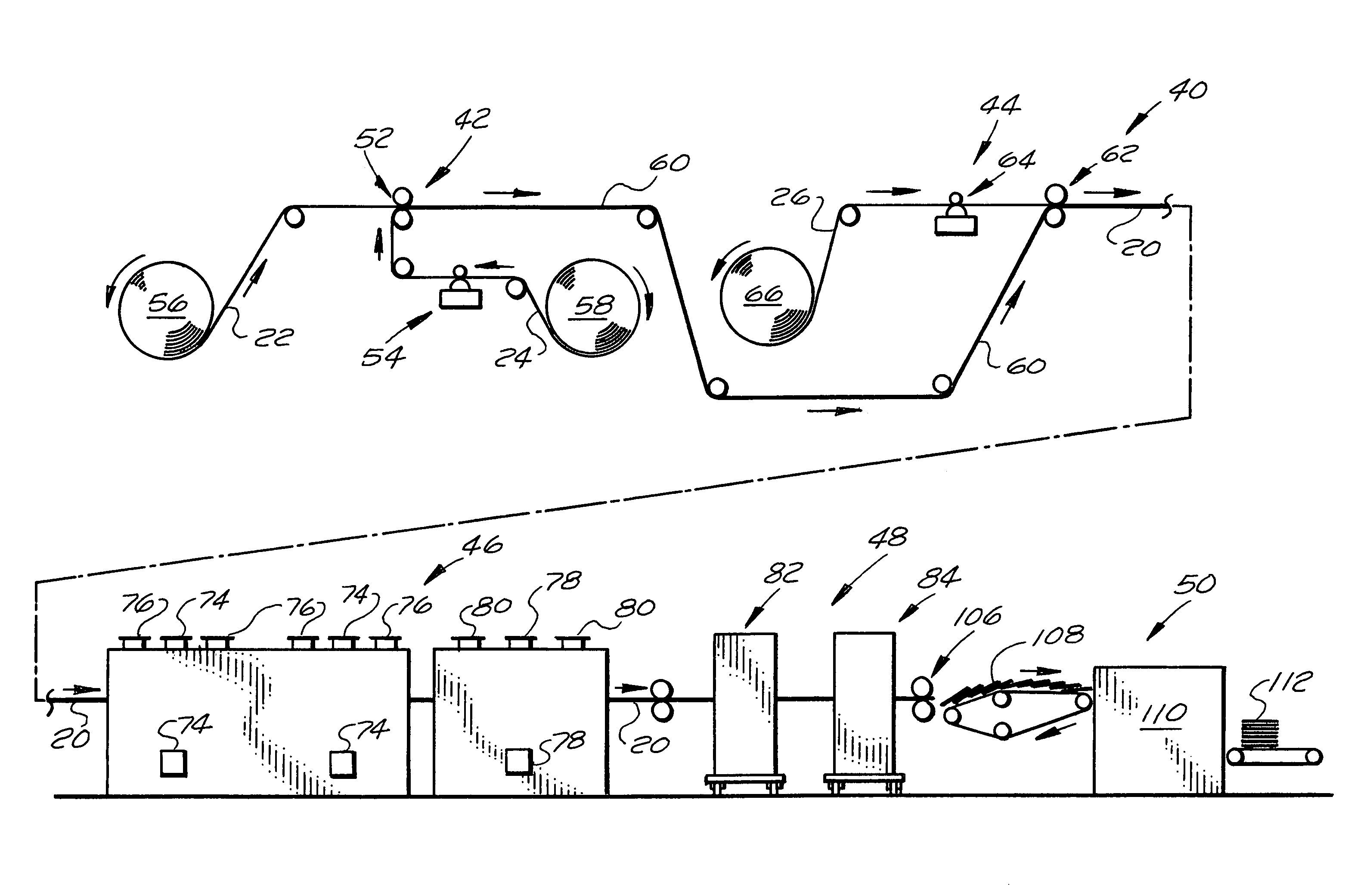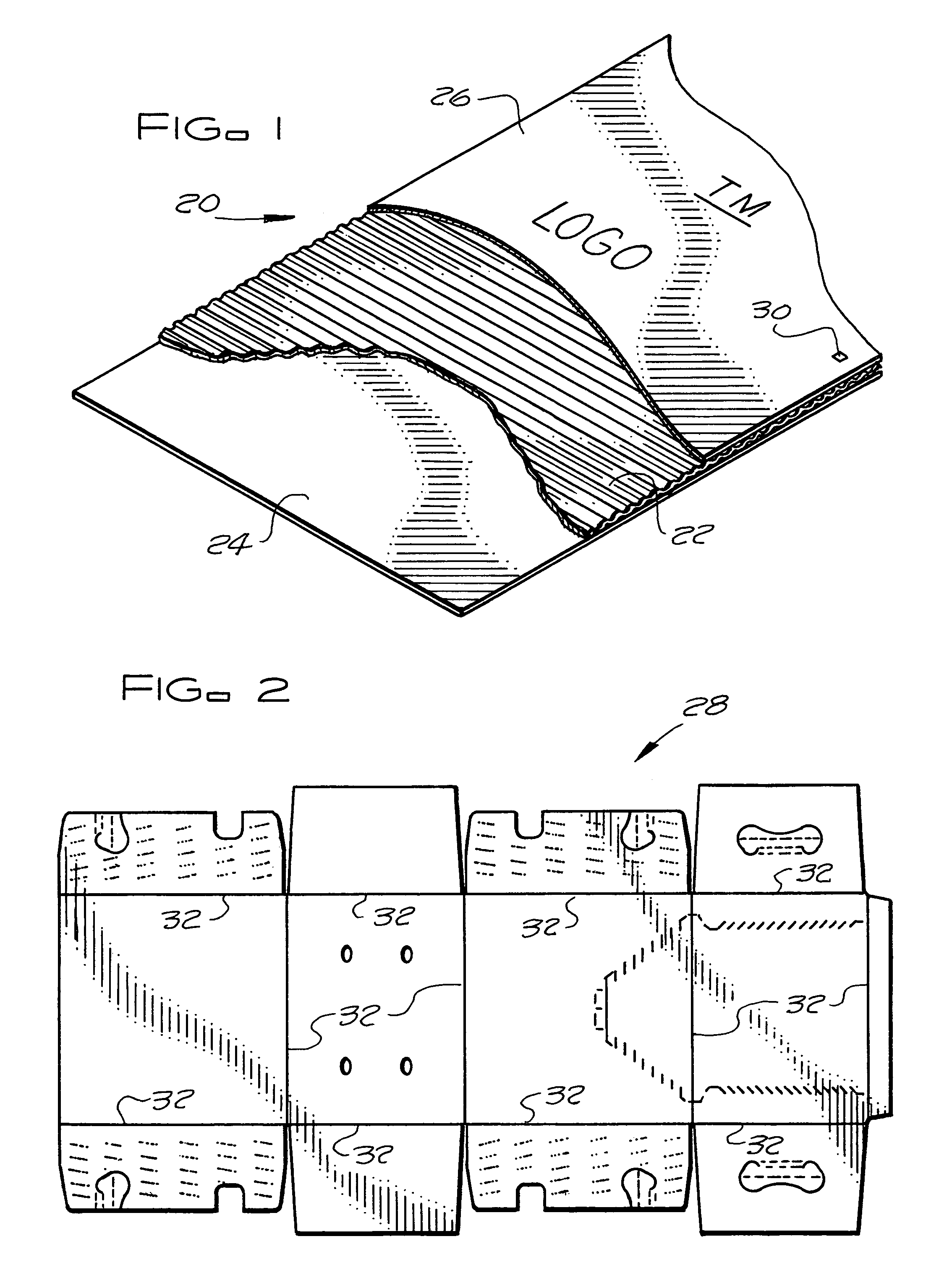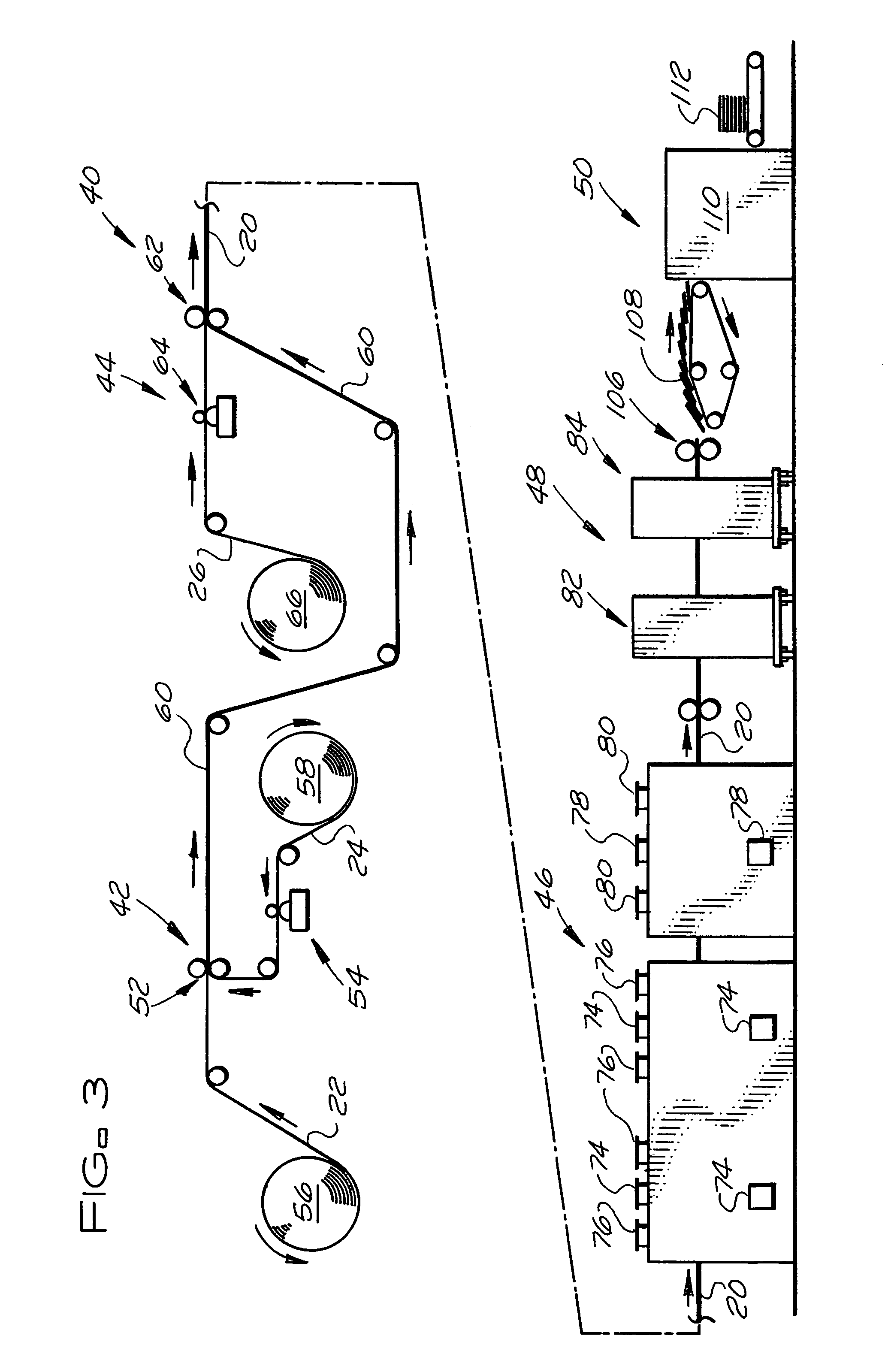Method and apparatus for forming corrugated board carton blanks
a technology of corrugated board and carton blanks, which is applied in the field of method and apparatus for forming can solve the problems of not allowing the adhesive bonding of inner and outer liners to the corrugated medium adversely affecting the integrity of the corrugated board carton blanks and the carton blanks made from the carton blanks, and printing matter and/or markings on the corrugated board to be out of register,
- Summary
- Abstract
- Description
- Claims
- Application Information
AI Technical Summary
Benefits of technology
Problems solved by technology
Method used
Image
Examples
Embodiment Construction
[0023]FIG. 1 is a schematic representation of a typical corrugated board 20 used in the in-line method and apparatus of the subject invention to form corrugated board carton blanks 28 such as but not limited to the carton blank shown in FIG. 2. The corrugated board 20 includes a corrugated medium 22 that forms a core of the corrugated board, an inner liner 24 and a printed outer liner 26. While other suitable corrugated medium could be used, the corrugated medium 22 forming the core of the corrugated board 20 is typically made of unbleached corrugated kraft paperboard or kraft paper-based paperboard. While other suitable liner materials could be used, the inner liner 24 of the corrugated board 20 is typically made of an unbleached kraft paper or kraft paper-based sheet material. While other suitable liner materials could be used, the printed outer liner 26 is typically made of an unbleached kraft paper or kraft paper-based paperboard. An unbleached kraft paper or kraft paper-based p...
PUM
 Login to View More
Login to View More Abstract
Description
Claims
Application Information
 Login to View More
Login to View More - R&D
- Intellectual Property
- Life Sciences
- Materials
- Tech Scout
- Unparalleled Data Quality
- Higher Quality Content
- 60% Fewer Hallucinations
Browse by: Latest US Patents, China's latest patents, Technical Efficacy Thesaurus, Application Domain, Technology Topic, Popular Technical Reports.
© 2025 PatSnap. All rights reserved.Legal|Privacy policy|Modern Slavery Act Transparency Statement|Sitemap|About US| Contact US: help@patsnap.com



